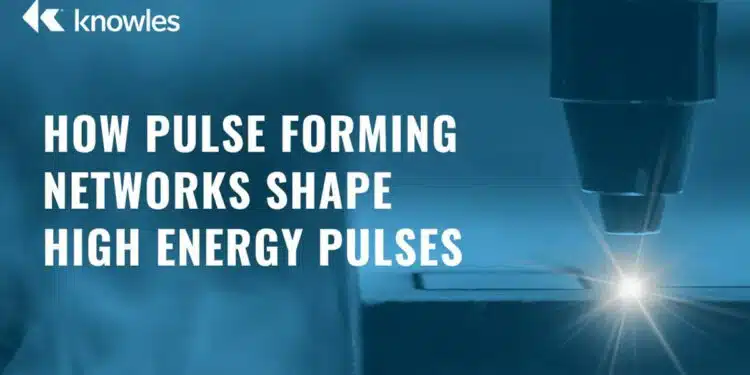This article based on Knowles Precision Devices blog explains use of capacitors and in pulse forming networks and how it shapes high energy pulses.
From high-power radar to advanced medical imaging, many cutting-edge technologies rely on precisely controlled high-energy pulses.
However, generating a pulse that delivers consistent power without distortion isn’t as simple as discharging a capacitor. These systems rely on Pulse Forming Networks (PFNs) to shape and control high-energy pulses.
Unlike direct capacitive discharge, which produces a decaying exponential pulse, PFNs generate well-defined pulses with steady voltage output. This controlled pulse shaping is critical for applications demanding uniform energy delivery. Here we’ll cover how PFNs work and how capacitor properties impact the network’s performance.
What Is a Pulse Forming Network?
A PFN is a circuit that converts the output of a Marx generator or capacitive discharge system into a controlled pulse with a well-defined, flat-top shape. Instead of a rapidly decaying exponential signal, PFNs produce steady, uniform pulses. They’re useful in:
- Particle accelerators and plasma research
- Pulsed laser systems
- Radar and high-power microwave systems
- Medical imaging and therapy devices
- Electromagnetic pulse (EMP) generation
By simulating a transmission line using lumped high-voltage capacitors and inductors, PFNs allow for compact, efficient pulse shaping in systems where a full-length transmission line would be impractical (e.g., in pulsed power applications with pulse widths exceeding ~100 ns).
How Are PFNs Designed?
One common PFN topology is the Type E Guillemin network, shown in Figure 1. The structure and component values of a PFN are carefully tuned based on the desired pulse width, impedance and energy delivery requirements.
Since capacitors are the primary energy storage components in PFNs, their properties directly influence the network’s performance. The most important capacitor characteristics for PFNs include:
- High voltage rating, so capacitors are capable of handling high electric fields without breakdown
- Low Equivalent Series Resistance (ESR) to reduce energy losses during rapid discharge and improve efficiency
- Fast discharge characteristics to create the desired pulse shape
- High energy density to maximize energy storage while maintaining a compact design
It’s also worth thinking about:
- Pulse duration, which determines the capacitance needed to achieve the desired pulse width
- Selecting load impedance to avoid a mismatch that degrades performance
- Operating environment, including factors like temperature, humidity and mechanical stress



































